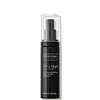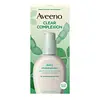What's inside
What's inside
 Key Ingredients
Key Ingredients

 Benefits
Benefits

 Concerns
Concerns

 Ingredients Side-by-side
Ingredients Side-by-side

Water
Skin ConditioningCaprylic/Capric Triglyceride
MaskingJojoba Esters
EmollientCetearyl Alcohol
EmollientCetyl Esters
EmollientPentylene Glycol
Skin ConditioningCetyl Palmitate
EmollientHelianthus Annuus Seed Oil Unsaponifiables
EmollientTetrahexyldecyl Ascorbate
AntioxidantLauryl Lactate
EmollientStearyl Alcohol
EmollientGlycerin
HumectantAlpha-Glucan Oligosaccharide
CleansingDimethicone
EmollientBakuchiol
AntimicrobialHordeum Distichon Extract
Skin ProtectingSantalum Album Extract
CleansingPhellodendron Amurense Bark Extract
Skin ConditioningDicetyl Phosphate
EmulsifyingCeteth-10 Phosphate
CleansingButylene Glycol
HumectantTocopherol
AntioxidantSqualane
EmollientUrsolic Acid
MaskingPseudoalteromonas Ferment Extract
HumectantSodium Lauroyl Lactylate
EmulsifyingHydrogenated Lecithin
EmulsifyingEthoxydiglycol
HumectantAstragalus Membranaceus Root Extract
EmollientSodium Hyaluronate
HumectantSilanetriol
Rhamnose
HumectantLycium Barbarum Fruit Extract
AstringentAcetyl Tetrapeptide-2
Skin ConditioningLecithin
EmollientCocos Nucifera Fruit Extract
EmollientRetinol
Skin ConditioningSodium Hydroxide
BufferingRosmarinus Officinalis Leaf Extract
AntimicrobialCeramide NP
Skin ConditioningSorbic Acid
PreservativePalmitoyl Hexapeptide-14
Skin ConditioningCeramide AP
Skin ConditioningPhytosphingosine
Skin ConditioningCholesterol
EmollientTocopheryl Acetate
AntioxidantCaprylyl Glycol
EmollientCeramide EOP
Skin ConditioningCarbomer
Emulsion StabilisingHydroxyethyl Acrylate/Sodium Acryloyldimethyl Taurate Copolymer
Emulsion StabilisingDisodium EDTA
Methylpropanediol
SolventUbiquinone
AntioxidantDipropylene Glycol
HumectantGlyceryl Caprylate
EmollientPropanediol
SolventChlorphenesin
AntimicrobialSodium Citrate
BufferingXanthan Gum
EmulsifyingPotassium Sorbate
PreservativeSodium Benzoate
MaskingBenzoic Acid
MaskingPhenoxyethanol
PreservativeAllyl Methacrylates Crosspolymer
Emulsion StabilisingCetyl Alcohol
EmollientPolysorbate 20
EmulsifyingBHT
AntioxidantSorbitan Isostearate
EmulsifyingPolysorbate 60
EmulsifyingEthylhexylglycerin
Skin ConditioningCitric Acid
BufferingPropyl Gallate
AntioxidantWater, Caprylic/Capric Triglyceride, Jojoba Esters, Cetearyl Alcohol, Cetyl Esters, Pentylene Glycol, Cetyl Palmitate, Helianthus Annuus Seed Oil Unsaponifiables, Tetrahexyldecyl Ascorbate, Lauryl Lactate, Stearyl Alcohol, Glycerin, Alpha-Glucan Oligosaccharide, Dimethicone, Bakuchiol, Hordeum Distichon Extract, Santalum Album Extract, Phellodendron Amurense Bark Extract, Dicetyl Phosphate, Ceteth-10 Phosphate, Butylene Glycol, Tocopherol, Squalane, Ursolic Acid, Pseudoalteromonas Ferment Extract, Sodium Lauroyl Lactylate, Hydrogenated Lecithin, Ethoxydiglycol, Astragalus Membranaceus Root Extract, Sodium Hyaluronate, Silanetriol, Rhamnose, Lycium Barbarum Fruit Extract, Acetyl Tetrapeptide-2, Lecithin, Cocos Nucifera Fruit Extract, Retinol, Sodium Hydroxide, Rosmarinus Officinalis Leaf Extract, Ceramide NP, Sorbic Acid, Palmitoyl Hexapeptide-14, Ceramide AP, Phytosphingosine, Cholesterol, Tocopheryl Acetate, Caprylyl Glycol, Ceramide EOP, Carbomer, Hydroxyethyl Acrylate/Sodium Acryloyldimethyl Taurate Copolymer, Disodium EDTA, Methylpropanediol, Ubiquinone, Dipropylene Glycol, Glyceryl Caprylate, Propanediol, Chlorphenesin, Sodium Citrate, Xanthan Gum, Potassium Sorbate, Sodium Benzoate, Benzoic Acid, Phenoxyethanol, Allyl Methacrylates Crosspolymer, Cetyl Alcohol, Polysorbate 20, BHT, Sorbitan Isostearate, Polysorbate 60, Ethylhexylglycerin, Citric Acid, Propyl Gallate
Salicylic Acid 0.5%
MaskingWater
Skin ConditioningC12-15 Alkyl Benzoate
AntimicrobialCetearyl Alcohol
EmollientDimethicone
EmollientMethyl Gluceth-20
HumectantPPG-10 Cetyl Ether
Skin ConditioningBis-Phenylpropyl Dimethicone
Arachidyl Alcohol
EmollientBehenyl Alcohol
EmollientGlycine Soja Seed Extract
Skin ConditioningGlycerin
HumectantIsoceteth-20
EmulsifyingPolyacrylamide
Cetearyl Glucoside
EmulsifyingArachidyl Glucoside
EmulsifyingC13-14 Isoparaffin
EmollientEthylene/Acrylic Acid Copolymer
Emulsion StabilisingParfum
MaskingLaureth-7
EmulsifyingDisodium EDTA
BHT
AntioxidantSodium Hydroxide
BufferingCitric Acid
BufferingSalicylic Acid 0.5%, Water, C12-15 Alkyl Benzoate, Cetearyl Alcohol, Dimethicone, Methyl Gluceth-20, PPG-10 Cetyl Ether, Bis-Phenylpropyl Dimethicone, Arachidyl Alcohol, Behenyl Alcohol, Glycine Soja Seed Extract, Glycerin, Isoceteth-20, Polyacrylamide, Cetearyl Glucoside, Arachidyl Glucoside, C13-14 Isoparaffin, Ethylene/Acrylic Acid Copolymer, Parfum, Laureth-7, Disodium EDTA, BHT, Sodium Hydroxide, Citric Acid
Ingredients Explained
These ingredients are found in both products.
Ingredients higher up in an ingredient list are typically present in a larger amount.
BHT is a synthetic antioxidant and preservative.
As an antioxidant, it helps your body fight off free-radicals. Free-radicals are molecules that may damage your skin cells.
As a preservative, it is used to stabilize products and prevent them from degrading. Specifically, BHT prevents degradation from oxidation.
The concerns related to BHT come from oral studies; this ingredient is currently allowed for use by both the FDA and EU.
However, it was recently restricted for use in the UK as of April 2024.
Learn more about BHTCetearyl alcohol is a mixture of two fatty alcohols: cetyl alcohol and stearyl alcohol. It is mainly used as an emulsifier. Emulsifiers help prevent the separation of oils and products. Due to its composition, it can also be used to thicken a product or help create foam.
Cetearyl alcohol is an emollient. Emollients help soothe and hydrate the skin by trapping moisture.
Studies show Cetearyl alcohol is non-toxic and non-irritating. The FDA allows products labeled "alcohol-free" to have fatty alcohols.
This ingredient is usually derived from plant oils such as palm, vegetable, or coconut oils. There is debate on whether this ingredient will cause acne.
Due to the fatty acid base, this ingredient may not be Malassezia folliculitis safe.
Learn more about Cetearyl AlcoholCitric Acid is an alpha hydroxy acid (AHA) naturally found in citrus fruits like oranges, lemons, and limes.
Like other AHAs, citric acid can exfoliate skin by breaking down the bonds that hold dead skin cells together. This helps reveal smoother and brighter skin underneath.
However, this exfoliating effect only happens at high concentrations (20%) which can be hard to find in cosmetic products.
Due to this, citric acid is usually included in small amounts as a pH adjuster. This helps keep products slightly more acidic and compatible with skin's natural pH.
In skincare formulas, citric acid can:
While it can provide some skin benefits, research shows lactic acid and glycolic acid are generally more effective and less irritating exfoliants.
Most citric acid used in skincare today is made by fermenting sugars (usually from molasses). This synthetic version is identical to the natural citrus form but easier to stabilize and use in formulations.
Read more about some other popular AHA's here:
Learn more about Citric AcidDimethicone is a type of synthetic silicone created from natural materials such as quartz.
What it does:
Dimethicone comes in different viscosities:
Depending on the viscosity, dimethicone has different properties.
Ingredients lists don't always show which type is used, so we recommend reaching out to the brand if you have questions about the viscosity.
This ingredient is unlikely to cause irritation because it does not get absorbed into skin. However, people with silicone allergies should be careful about using this ingredient.
Note: Dimethicone may contribute to pilling. This is because it is not oil or water soluble, so pilling may occur when layered with products. When mixed with heavy oils in a formula, the outcome is also quite greasy.
Learn more about DimethiconeDisodium EDTA plays a role in making products more stable by aiding other preservatives.
It is a chelating agent, meaning it neutralizes metal ions that may be found in a product.
Disodium EDTA is a salt of edetic acid and is found to be safe in cosmetic ingredients.
Learn more about Disodium EDTAGlycerin is already naturally found in your skin. It helps moisturize and protect your skin.
A study from 2016 found glycerin to be more effective as a humectant than AHAs and hyaluronic acid.
As a humectant, it helps the skin stay hydrated by pulling moisture to your skin. The low molecular weight of glycerin allows it to pull moisture into the deeper layers of your skin.
Hydrated skin improves your skin barrier; Your skin barrier helps protect against irritants and bacteria.
Glycerin has also been found to have antimicrobial and antiviral properties. Due to these properties, glycerin is often used in wound and burn treatments.
In cosmetics, glycerin is usually derived from plants such as soybean or palm. However, it can also be sourced from animals, such as tallow or animal fat.
This ingredient is organic, colorless, odorless, and non-toxic.
Glycerin is the name for this ingredient in American English. British English uses Glycerol/Glycerine.
Learn more about GlycerinSodium Hydroxide is also known as lye or caustic soda. It is used to adjust the pH of products; many ingredients require a specific pH to be effective.
In small amounts, sodium hydroxide is considered safe to use. However, large amounts may cause chemical burns due to its high alkaline.
Your skin has a natural pH and acid mantle. This acid mantle helps prevent harmful bacteria from breaking through. The acid mantle also helps keep your skin hydrated.
"Alkaline" refers to a high pH level. A low pH level would be considered acidic.
Learn more about Sodium HydroxideWater. It's the most common cosmetic ingredient of all. You'll usually see it at the top of ingredient lists, meaning that it makes up the largest part of the product.
So why is it so popular? Water most often acts as a solvent - this means that it helps dissolve other ingredients into the formulation.
You'll also recognize water as that liquid we all need to stay alive. If you see this, drink a glass of water. Stay hydrated!
Learn more about Water